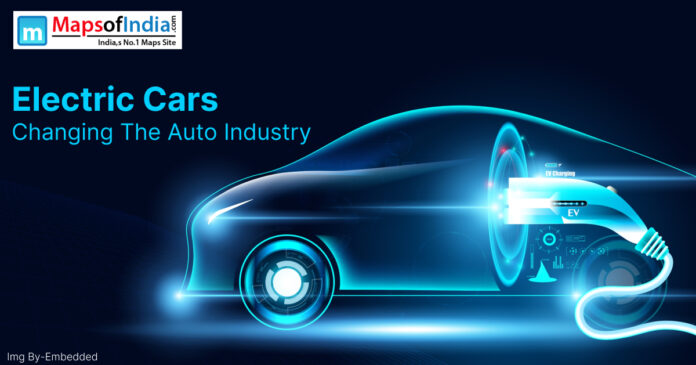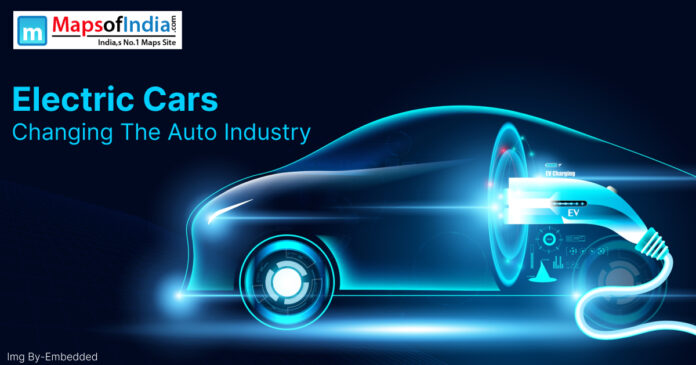The Rise of Electric Vehicles
The automotive industry is on the cusp of one of its most significant transformations ever, driven by the rising popularity of electric vehicles (EVs). As technology advances and environmental concerns grow, EVs are becoming increasingly mainstream, transforming not just the vehicles themselves but the entire ecosystem around their manufacture, sale, and use.
A Historical Perspective
Electric vehicles have been around since the early 19th century, with their popularity rivaling that of gasoline-powered cars in the late 1800s. The mass production of Henry Ford’s Model T shifted the balance in favor of internal combustion engines, but concerns about global warming, air pollution, and oil depletion have revitalized interest in EVs. Breakthroughs in battery technology, supportive policies, and innovative companies like Tesla have made EVs a viable option for the masses.
Environmental Impact and Sustainability
One of the primary drivers behind the adoption of EVs is their potential to reduce greenhouse gas emissions. Unlike internal combustion engine vehicles, EVs produce no tailpipe emissions. When powered by renewable energy sources like wind or solar, their environmental footprint is significantly reduced. The transportation sector is a major contributor to global CO2 emissions, accounting for nearly a quarter of the total. Switching to EVs is crucial for meeting global climate targets and mitigating global warming.
Lower Pollution and Health Benefits
EVs also play a critical role in improving urban air quality. Cities plagued by smog and poor air quality can benefit greatly from the adoption of electric vehicles. Additionally, EVs reduce noise pollution, making urban living environments more comfortable. According to the World Health Organization, air pollution is responsible for approximately 7 million premature deaths annually. By reducing our reliance on fossil fuels, EVs can contribute to better public health worldwide.
Disruption in Automotive Manufacturing
The shift to EVs is not without its challenges for the automotive industry. Electric vehicles have simpler mechanics than their gasoline counterparts, with fewer moving parts and less complex engines and transmissions. This simplicity can reduce manufacturing and maintenance costs but also disrupts traditional supply chains. The industry is seeing a shift towards battery production, software development, and EV-specific components.
Legacy Automakers vs. New Players
The EV revolution has opened the door for new entrants like Tesla, Rivian, and Lucid Motors, which have challenged established automakers with innovative features and direct-to-consumer sales models. Traditional manufacturers such as Ford, General Motors, Volkswagen, and Toyota have had to adapt quickly, unveiling ambitious EV plans and models like Ford’s F-150 Lightning, GM’s Ultium platform, and Volkswagen’s ID series.
Battery Technology: The Heart of the EV Revolution
Advances in battery chemistry have been pivotal in making EVs more viable. Lithium-ion batteries have become more efficient, affordable, and reliable over the past decade. Research into solid-state batteries promises even greater energy efficiency and faster charging times. The significant reduction in battery costs has made EVs more accessible to the average consumer.
Recycling and Sustainability Challenges
As EV adoption grows, so does the challenge of battery recycling and sourcing raw materials. The extraction of metals like lithium, cobalt, and nickel can have environmental and ethical implications. The industry is moving towards closed-loop recycling and reducing the use of scarce resources.
Charging Infrastructure and Energy Grid Integration
The expansion of charging infrastructure is critical for widespread EV adoption. Governments and private companies are investing heavily in charging networks to alleviate range anxiety. Technologies like DC fast charging can charge an EV battery to full in under an hour, while home charging offers convenience.
Grid Integration and Renewable Energy
EVs can play a role in stabilizing the electrical grid through Vehicle-to-Grid (V2G) technology, allowing them to supply electricity back to the grid during peak demand periods. When charged with renewable energy, EVs can enhance the overall sustainability of the energy system.
Changing Consumer Behavior and Market Trends
Consumer preferences are shifting towards more environmentally friendly and technologically advanced vehicles. EVs offer not just sustainability but also modern features and improved performance. Many EVs are praised for their instant torque, smooth acceleration, and sleek designs.
Cost of Ownership
While the initial purchase price of EVs can be higher, they typically offer lower total cost of ownership compared to gasoline vehicles. EV owners save on fuel, maintenance, and repairs. As battery prices continue to fall, EVs are expected to become cost-competitive with gasoline vehicles in most markets by 2026.
Autonomous Driving and Future Mobility
EVs are at the forefront of autonomous driving technology. Their digital nature makes them more adaptable to autonomous features and sensors. Companies like Tesla, Waymo, and Cruise are developing autonomous driving capabilities that could revolutionize urban mobility.
Mobility-as-a-Service (MaaS)
The rise of EVs is also driving the growth of Mobility-as-a-Service models, including car-sharing, ride-hailing, and subscription services. This shift can lead to more efficient urban transportation systems and reduced vehicle ownership.
Challenges Ahead
Despite the progress, the EV revolution faces challenges such as supply chain disruptions, consumer misinformation, and geopolitical risks. Addressing these issues will be crucial for sustaining the momentum of the EV transition.
Conclusion
Electric vehicles represent more than just a change in propulsion; they are leading a broader transformation in the automotive industry. As the industry continues to innovate and adapt, EVs will play a central role in reducing carbon emissions and reshaping urban mobility. The collaboration of governments, automakers, consumers, and technology companies will be essential in driving this change and creating a more sustainable future for transportation.




